Consisting of a fairly simple combination of spirit, citrus, sweetener, and the occasional egg white, sour cocktails are beloved within the drinks world. From classics like the Whiskey Sour and the Amaretto Sour to more exploratory concoctions, the category truly offers something for every palate. And once you’ve mastered the technique, you’ll open the door for an infinite number of variations on the build, all of which are equally delicious.
With such simple specs, it’s highly likely that you have everything you need to make the perfect sour cocktail on your bar cart already. From saccharine sippers to the distinctive smoky profile of a mezcal-based libation, here are 10 of the best sour cocktails you should try right now.
The Whiskey Sour
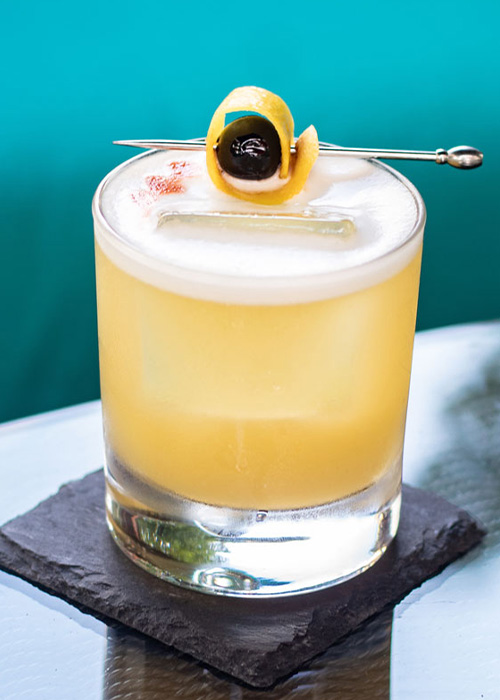
Don’t Miss A Drop
Get the latest in beer, wine, and cocktail culture sent straight to your inbox.
Gaining popularity in the 1860s and then again in the 1960s, the Whiskey Sour is probably the most famous of the sour bunch. When made properly — meaning devoid of any premade sour mix — the cocktail is bright and refreshing, making it a challenge to stop at just one. Simple syrup elevates the delicate vanilla notes of the whiskey, while one whole ounce of lemon juice balances out any sweetness, adding a vivacious edge. With an egg white added in, the cocktail takes on a luscious, weighted mouthfeel. It’s really no wonder that the Whiskey Sour was named “one of the cardinal points of American drinking,” by David Wondrich in his book, “Imbibe!”
The Rum Sour
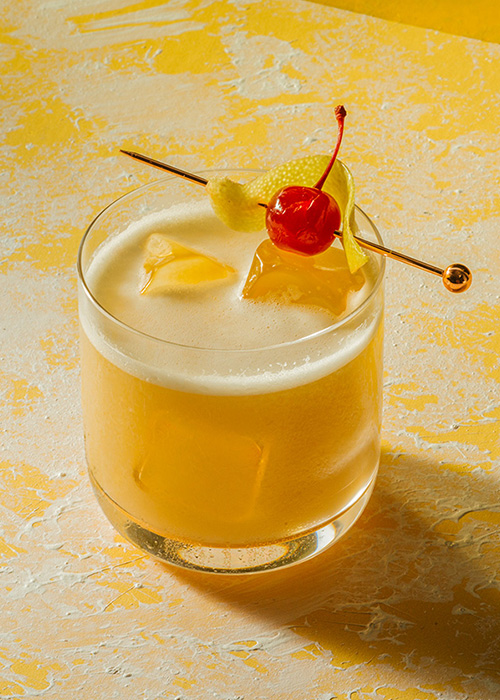
Prepared with a base of two parts golden rum and one part lemon juice, the Rum Sour, when complete, takes on the flavor of a pineapple upside-down cake. To make one for yourself, combine golden rum, fresh lemon juice, simple syrup, and one egg white to a cocktail shaker and dry shake to combine. Dry shaking — shaking cocktail ingredients without ice — is a technique often employed with egg white cocktails, as it allows the whites to further emulsify and makes the cocktail creamier. Strain into a rocks glass, garnish with a lemon twist and cherry, and enjoy a taste of sunshine!
The Gin Sour
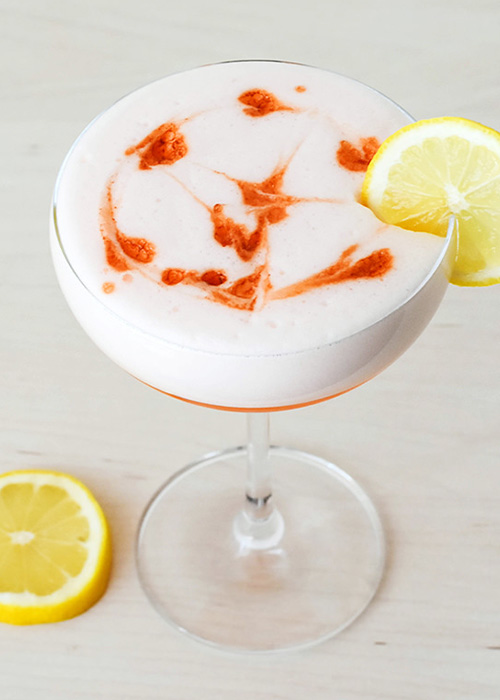
For a cocktail that leans more on the bitter and herbaceous side, the Gin Sour is the perfect fix. Rather than using simple syrup, this recipe swaps in half an ounce of Aperol, providing some sweetness and bitter citrus twang that elevates the delicate botanicals of the gin. Be sure to garnish with a lemon wheel and a few drops of aromatic bitters for an expressive and aesthetic finish.
The Pisco Sour
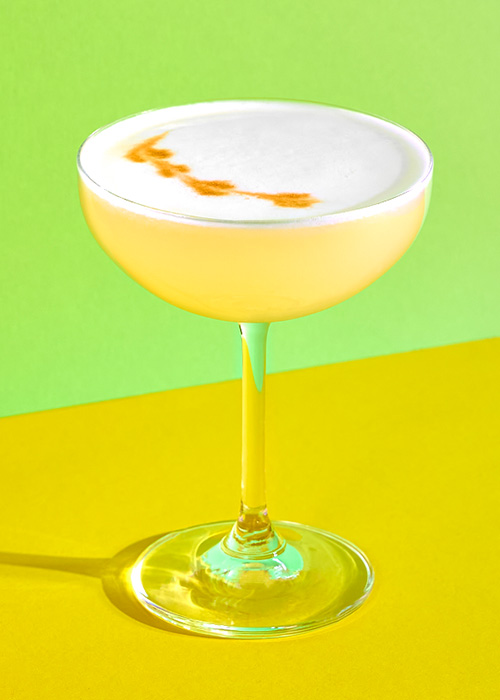
Native to Chile and Peru, pisco is a grape brandy that carries delicate fruit and herbal notes. Though the spirit calls two countries home, the Pisco Sour was invented in Lima, Peru in the 1920s and is regaining popularity on swanky cocktail bar menus today. Whereas many sour cocktails use lemon as the citrus element, the Pisco Sour swaps out the yellow fruit for 1 ounce of freshly squeezed lime juice. In another derivative, the Peruvian cocktail uses gum arabic syrup rather than simple syrup, though simple can be substituted if necessary. To make your own, combine pisco, lime juice, gum arabic syrup, and an egg white in a shaker, shake for about a minute, and strain into a cocktail glass before garnishing with Angostura Bitters.
The Aperol Sour
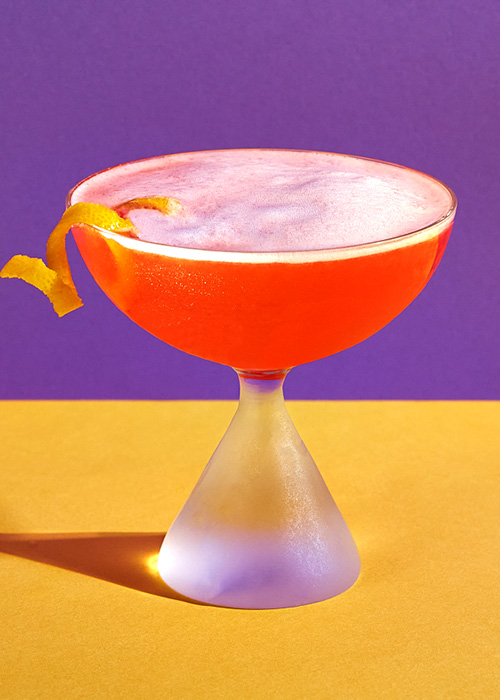
If you’re looking for ways to use that bottle of Aperol on your bar cart other than topping it with some Prosecco and club soda, the Aperol Sour is the ideal alternative. Made with 2 ounces of Aperol and half an ounce of gin as the base, this cocktail is bright and floral, with lemon juice counteracting the slightly bitter, herbal notes of the spirits. Simple syrup adds a hint of sweetness while the egg white softens any tangy flavor from the citrus for a luscious, creamy sipper.
The Amaretto Sour
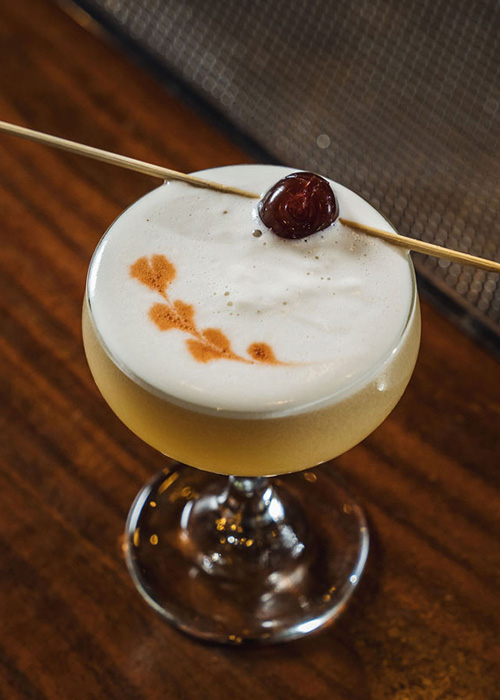
Believed to have been created in the United States sometime in the 1970s, the Amaretto Sour — despite its kitschy reputation — is a delightful concoction that marries sweet, sour, and savory flavors. Amaretto and cask-strength bourbon provide a nutty, vanilla base only further sweetened with the addition of simple syrup. Lemon juice provides a zesty edge, with an egg white fusing the flavors together for a cocktail that tastes something between an almond biscotti and a boozy lemonade.
The Plum Sour
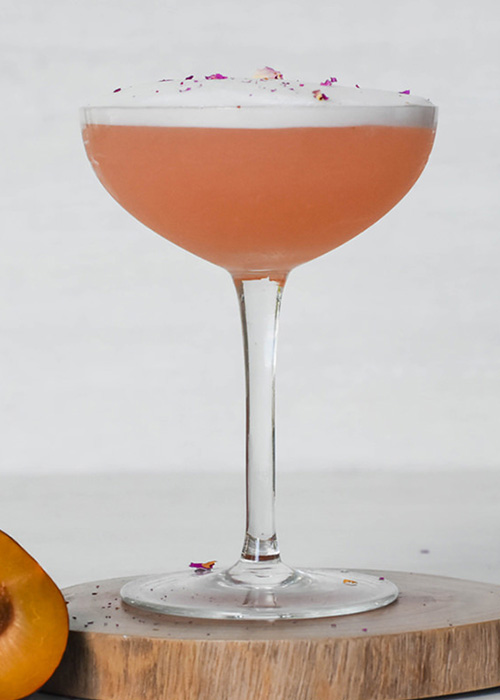
A variation of the Gin Sour, this recipe uses plum-infused simple syrup to provide an additional fruity dimension to the libation. The luscious stone fruit flavors blend beautifully with the bright acidity of the lemon, highlighting the floral gin notes. When roughly shaken with an egg white, the cocktail is provided with a soft, rounded edge and a meringue-like head perfect for bitters or a petal as its garnish.
The Flower Power Sour
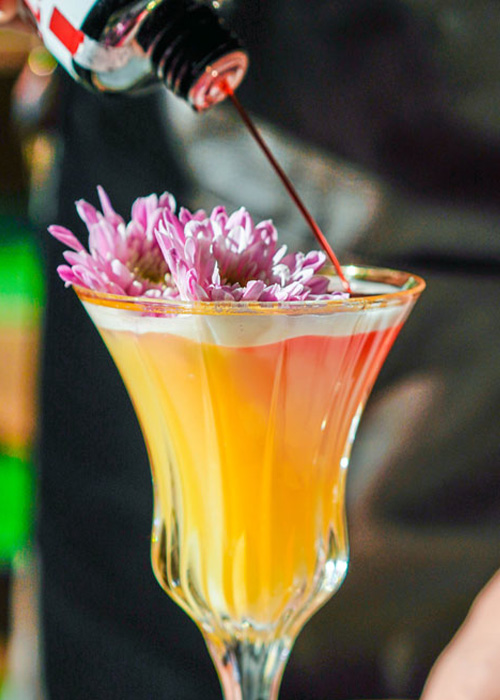
Rather than using only citrus fruits as the sour element in this variation, the Flower Power Sour uses both lemon juice and pineapple juice for an additional twang. Made with a base of white rum, its tropical pineapple flavors marry wonderfully with the toasted sugar notes of the rum. Several dashes of red aromatic bitters provide a spiced edge, and all flavors combine seamlessly when shaken with an egg white. Serve in a coupe glass and garnish with a few dashes of bitters for some extra color and an edible flower before serving.
The Grapefruit Tequila Sour
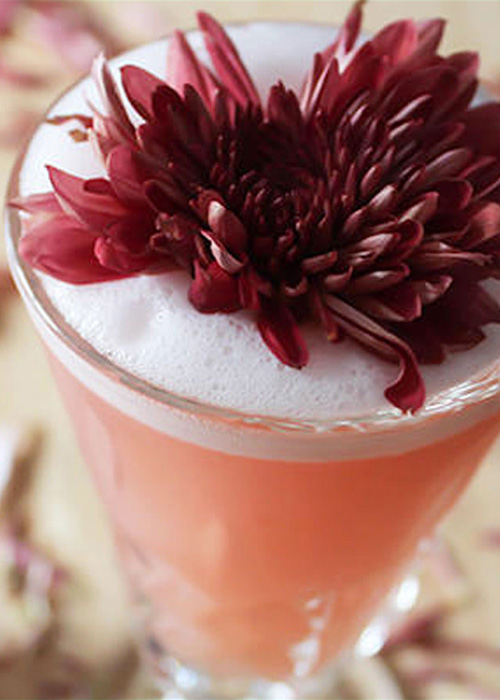
Taking inspiration from the Paloma, Mexico’s national cocktail, the Grapefruit Tequila Sour takes its standard ingredients of tequila, grapefruit juice, and lime juice and incorporates them into the typical sour build. To make your own, combine the three ingredients, a hint of agave syrup, and an egg white in a cocktail shaker before dry shaking to emulsify for 20 seconds. Add a handful of ice, reshake for 20 seconds, and serve in a coupe glass garnished with an edible flower.
The Pineapple Mezcal Sour
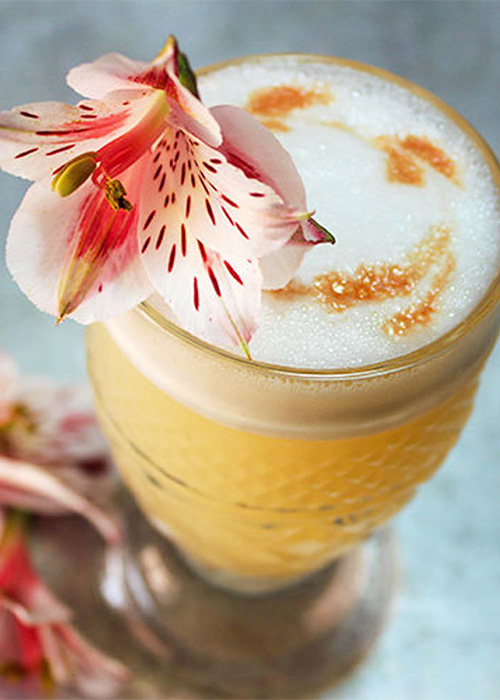
A derivative of the beloved Pisco Sour, the Pineapple Mezcal Sour features Mexico’s smoky native spirit as its base. The smoky essence of the mezcal fuses beautifully with the earthy acidity of pineapple juice, with lime juice bringing an additional layer of effervescence. Rather than using simple syrup to provide a layer of sweetness, agave syrup is used to stay true to the cocktail’s origin country, while an egg white cushions the mouthfeel.


